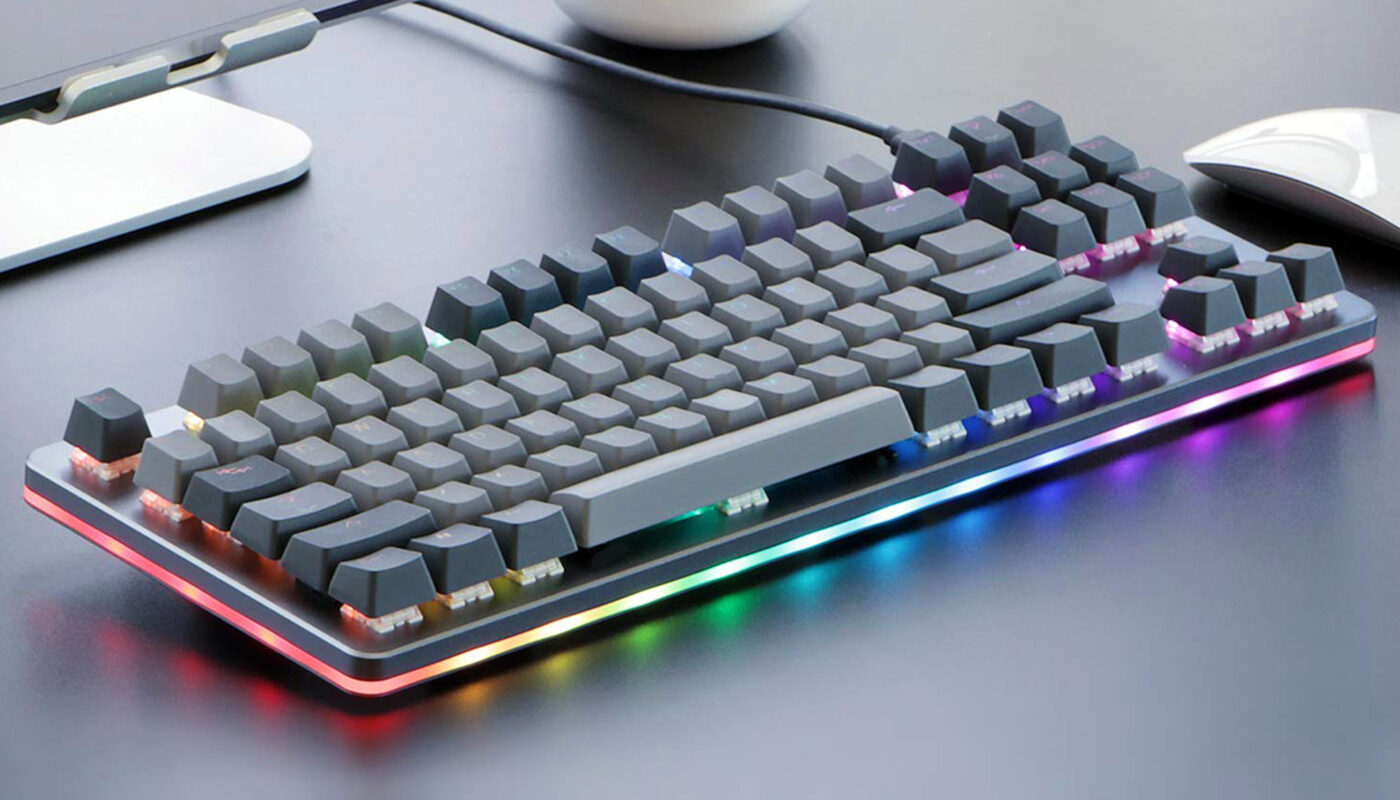Computer keyboards have evolved significantly since their inception in the 1960s. Originally developed as a way to input commands into mainframe computers, keyboards have adapted over the decades to meet the needs of personal computers, laptops, and mobile devices. Let’s take a look at the history and design changes of the ubiquitous computer keyboard.
The early keyboards
Some of the earliest computer keyboards were developed in the 1960s for mainframe computers. These keyboards were large, heavy, and contained only the most basic alphanumeric keys and function keys. Layouts were non-standardized between manufacturers. Keys were mechanical and quite noisy to press. The “QWERTY” layout became popular as it was discovered to be efficient for typewriters. However, the standardization of this layout for computers had more to do with familiarity than ergonomics or efficiency for computer use.
The introduction of PCs in the 1980s brought about a new era of keyboard design. IBM helped set industry standards with their PC keyboard which featured additional function and editing keys along with the traditional QWERTY layout. These keyboards were wired and plugged directly into the first personal computers. Typing on mechanical keys became the norm for data entry on early home computers and word processors.
Evolution of ergonomic design
As computers became more ubiquitous in offices throughout the 1990s, issues with traditional keyboard designs started to arise. Repetitive stress injuries increased due to the non-ergonomic postures required when typing on flat keyboards for many hours each day. Ergonomic keyboards began emerging with contoured shapes, split designs, and alternative key arrangements meant to reduce strain.
Notable ergonomic keyboard designs included the splits designed to angle the hands outward, vertical keyboards to keep the wrists straight, and keyboards with concave or domed shapes to support the wrists. Alternative key arrangements like Dvorak and Colemak also aimed to spread finger movement more evenly across both hands. While these designs provided benefits, their non-standard layouts made universal adoption challenging.
Ergonomic features like wrist rests also became common to promote healthier hand and arm positions. Adjustable stands allowed keyboards to be tilted for proper ergonomic alignment. Keyboard manufacturers integrated these kind of ergonomic designs for workplace health. Hybrid designs also emerged, marrying ergonomic shapes with standard QWERTY layouts for more universal use.
Modern wireless keyboards
Wireless connectivity became an important feature starting in the 2000s, freeing keyboards from wires connecting to computers. Early wireless keyboards used radio frequency (RF) technology with a small RF transmitter plugged into the computer or laptop. Later Bluetooth became the dominant technology for wireless keyboards due to its robustness and built-in support across most modern devices.
Wireless Bluetooth keyboards now connect easily to desktop computers, laptops, tablets, and smartphones from a distance of up to 30 feet. Rechargeable batteries allow them to operate for months or years between charges, depending on usage. Slimmer silocon keyboard covers provide protection from spills and debris. Multi-device pairing allows a single keyboard to quickly switch between connected gadgets.
Backlit versions illuminate keys in low light conditions. Different lighting modes can be customized. Materials have also evolved – many modern keyboards feature slim aluminum, plastic or glass constructions. Some even integrate fingerprint readers or dedicated buttons for accessing functions like volume, playback or launching apps. Wireless ergonomic split keyboards also exist for optimal hand positioning.
Touchscreen keyboards
Onscreen or touchscreen Computer Keyboards emerged alongside touchscreen smartphones, tablets and laptops without physical keyboards. These allow fully digital keyboards to pop up interactively on the screen itself. Multi-touch typing detection recognizes simultaneous key presses for faster input. Options exist for different keyboard layouts and sizes optimized for various devices and uses.
Autocorrect and predictive text aim to minimize errors as characters are typed. Swipe-based input methods also interpret typed gestures to input words and phrases in one fluid motion instead of tapping each individual letter. Haptic or tactile feedback can mimic physical clicks to enhance the onscreen typing experience. Voice input provides an alternative interface using speech recognition capabilities.
The future of keyboards
As voice interfaces mature further and virtual/augmented reality takes hold, the need for physical keyboards may decrease in some contexts. However, for many desktop or laptop users, the familiar QWERTY keyboard is likely to remain an effective and natural way to enter text for the foreseeable future. Gesture-based and projected keyboards hint at emerging futuristic input methods. Novelty keyboard designs including rolls and sliders point to ongoing experimentation. Ultimately, the most optimal keyboard designs will balance user needs, technological capabilities and ergonomic health considerations. Standards will also continue balancing universal usability with innovative new features.
In conclusion, over 60 years, computer keyboards have evolved significantly from their initial mechanical form to incorporate ergonomic shapes, wireless connectivity, multi-device pairing and other modern features while still maintaining familiar QWERTY layouts. Continuous innovation ensures keyboards remain comfortable and efficient input tools to support our digital workflows for years to come, whether physical or virtual. Overall, keyboards have demonstrated impressive adaptability in fulfilling their crucial role of translating our intentions into the digital words that power the technologies we interact with daily.
*Note:
1. Source: Coherent Market Insights, Public sources, Desk research
2. We have leveraged AI tools to mine information and compile it.



